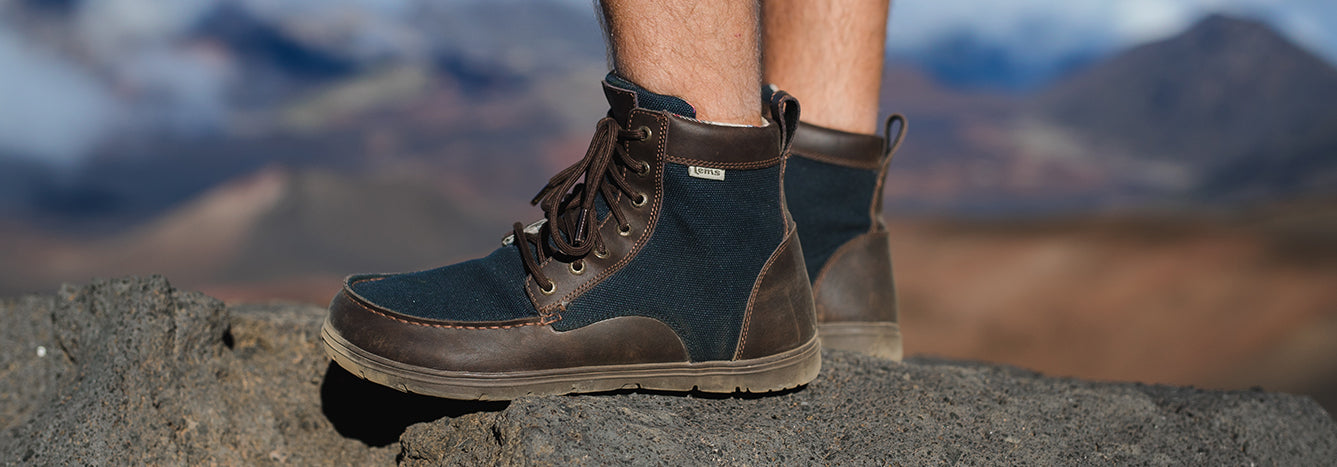
I never in my life expected to worry about something as obscure as shoe weight, outsole design or heel angle. Even the idea of having problems sliding my foot into a tall boot was not considered until four years ago when I lost my leg above the knee in a vehicle accident. As I think back now I realize that my views on walking with a prosthetic leg were very unrealistic.
All I knew at that point was that some guy named Oscar Pistorius was able to run at olympic level speeds (I later learned he has his knees) and that there were now these new-age bionic computer knees, that I assumed would have me climbing up stairs and running around like I had with two legs. Needless to say, shoes were not even a consideration for me as I began researching and learning all I could about prosthetic knee and leg set-ups.
When I received the call telling me I could come pick up my socket and leg prosthesis, I was beyond excited. Finally, I would have a leg again and be able to stand up without crutches and walk. As I sat in the room waiting for them to bring it out, I assumed I would just put on this bionic leg and walk like normal, but quickly learned that was not the case.
I tried the prosthetic on barefoot and did some test steps. It was strange because the foot and ankle is rigid and set at an angle, so it felt uncomfortable just to stand upright. Having no feeling or control when taking a step is something I certainly had to get used to. It took several weeks for me to learn how to walk without staring down at my feet to ensure my leg was in place.
Contrary to what I had assumed, the “bionic” part of the knee was not so bionic at all. Though the technology is advanced, there is no such thing as a leg that reacts or walks like a natural one does. A prosthetic is only actuated by springs, therefore it cannot do what real muscles and nerve endings do.
I have always worn boots whether military, cowboy or hiking. As a new amputee I did not know that prosthetic ankles and feet are rigid and require much more work. There is no such thing as pointing your toes into a tall boot and wiggling your foot until it slides on. I found this out the hard way when I had reached a point where I was walking better and wanted to wear boots again.
Since the ankle and foot stay rigid at 90 degrees, the cowboy boot shaft would not allow my foot to go far enough in, and soon enough my prosthetic foot was hopelessly stuck. Shortly after, I called my prosthetist (Wilver, at Action Orthopedics) to talk about my concerns. He was great and explained the issues with heel rise and prosthetic feet, and explained that my model foot was not designed for the heel angle of a traditional boot.
In fact, a special designed prosthetic foot is required to wear the types of boots I was previously accustomed to. Due to the ways in which traditional prosthetics operate, wearing a high-heel style shoe with an incorrect knee and foot setup causes an unintentional walking motion, eventually causing your leg to unexpectedly collapse. If I were to choose a special high-heel prosthetic foot and leg setup, then I’d be stuck walking on my toes once my boots were removed. Therefore, I would need to invest in a spare foot to wear when walking barefoot.
Since my cowboy boots did not work, I decided to try two other style boots with shorter ankle height and a lower heel drop, one being a low-rise lightweight hiking boot. I was able to slide the boot on, but something I had not anticipated occurred. All my prior walking practice had been done with sneakers, therefore all adjustments for swing and leg speed were based on that shoe weight.
With my first step with the boot, my prosthetic reacted as if you were to put a ten pound exercise weight on one leg to go walk your dog. The prosthetic leg now swung so slow that I could not even walk safely due to the delay in walking stride, so my prosthetist spent hours adjusting everything to correct this problem. I was so excited to walk that I didn’t initially think about the fact that a prosthetic leg is dead weight hanging off your body and what would have been considered a “lightweight" hiking boot was contributing two extra pounds of weight. The other problem I found was that due to the heel ledge on the sole and the aggressive lugged tread, these boots would often catch on any uneven terrain.
This began my boot searching journey, as I took a scale to shoe stores with me in order to weigh every style of chukka and hiking boot I came across. It killed me to admit that sneaker style shoes would be my lightest and most comfortable option. I weighed a name brand pair of sneakers and found them to be approximately nine ounces each. When I put them on, the difference in weight from the hiking boot was so dramatic that I was having problems walking because the leg wanted to swing forward faster than necessary due to the reduced shoe weight. I accepted that I would forever have to wear this sneaker since it was so lightweight, even though I did not like the brand or the style.

I continued to test various other shoes over the years and always thought the last one I had purchased was the lightest and stylish enough for me to feel comfortable wearing. I had a subconscious tendency to pick up any shoe I came across to gauge its weight in my search for the holy grail lightweight boot.
During a short trip to Denver my girlfriend and I were browsing in a store when she pointed out some lightweight Lems boots. I held them up and was amazed by the weight and style, but right then our cab pulled up and we had to leave for the airport. I assumed I would remember the Lems name and would research them when I returned home. Needless to say, I could not recall the Lems name and it was always the boot that got away. My girlfriend and I both said we should have bought them when we had the chance, but we had been in such a rush.
Several months later fate led me to an online blog referencing lightweight, zero heel rise, foldable boots. I immediately recognized elements of the design from the store in Denver and then the name "Lems" rang a bell. This was the true lightweight boot style I had been searching for all along. The Lems Boulder Boot was possibly the answer to my prayers for a boot that weighed similar to a sneaker.
I ordered my first pair of Lems Boulder Boots shortly after rediscovering them, and when they arrived I pulled out my trusty scale. In my size they weigh just a smidge over 13 ounces. I reweighed it several times to make sure I was reading it correctly, and was shocked to find that the boot was within a few ounces of my name brand sneakers - I was ecstatic.
Then there is the fit. Lems have a wide toe box which paired perfectly with my wide feet. Usually, I have to buy footwear a half size larger to compensate for my wide foot, but then I end up with a longer shoe length than needed. Lems fit me perfectly and felt so natural. As an amputee I was about to experience the true benefits of Lems' zero-drop, wide toe box features.
In reading the Lems website about the benefits of minimalist footwear, I did get a bit of their concept, but needless to say reading about something and then actually experiencing it can be worlds apart. Every other shoe company seems to want to add cushioning, especially to the heel area. As an amputee, that zero rise heel gives me the stability I need to ensure each step I take can be made safely and confidently. Additionally, zero-drop means the foot has a lower center of gravity compared to the typical thick soled sneaker, helping to maintain balance.
With natural legs you really take for granted how many micro adjustments your ankles, knees and muscles make as you walk across uneven surfaces. After taking several hikes with my Boulder Boots, I have also found the added bonus of the outsole. Since the Boulder Boot has a flatter design and sits closer to the ground, I have less issues with the bottom of the boot hanging and dragging over rocks, bumps and roots.
I was so impressed with my first pair of Lems that I bought a second pair and have now had them just over a year. To put that in perspective, out of all the shoes and boots I have purchased in my search for the perfect footwear as an amputee, there has never been another style or brand that I have purchased a second pair of. My Boulder Boots will most likely not be the last style of Lems I own, and that is due to the fact that this brand meets the holy grail of footwear attributes I had been searching for all along.
- Shaun King


